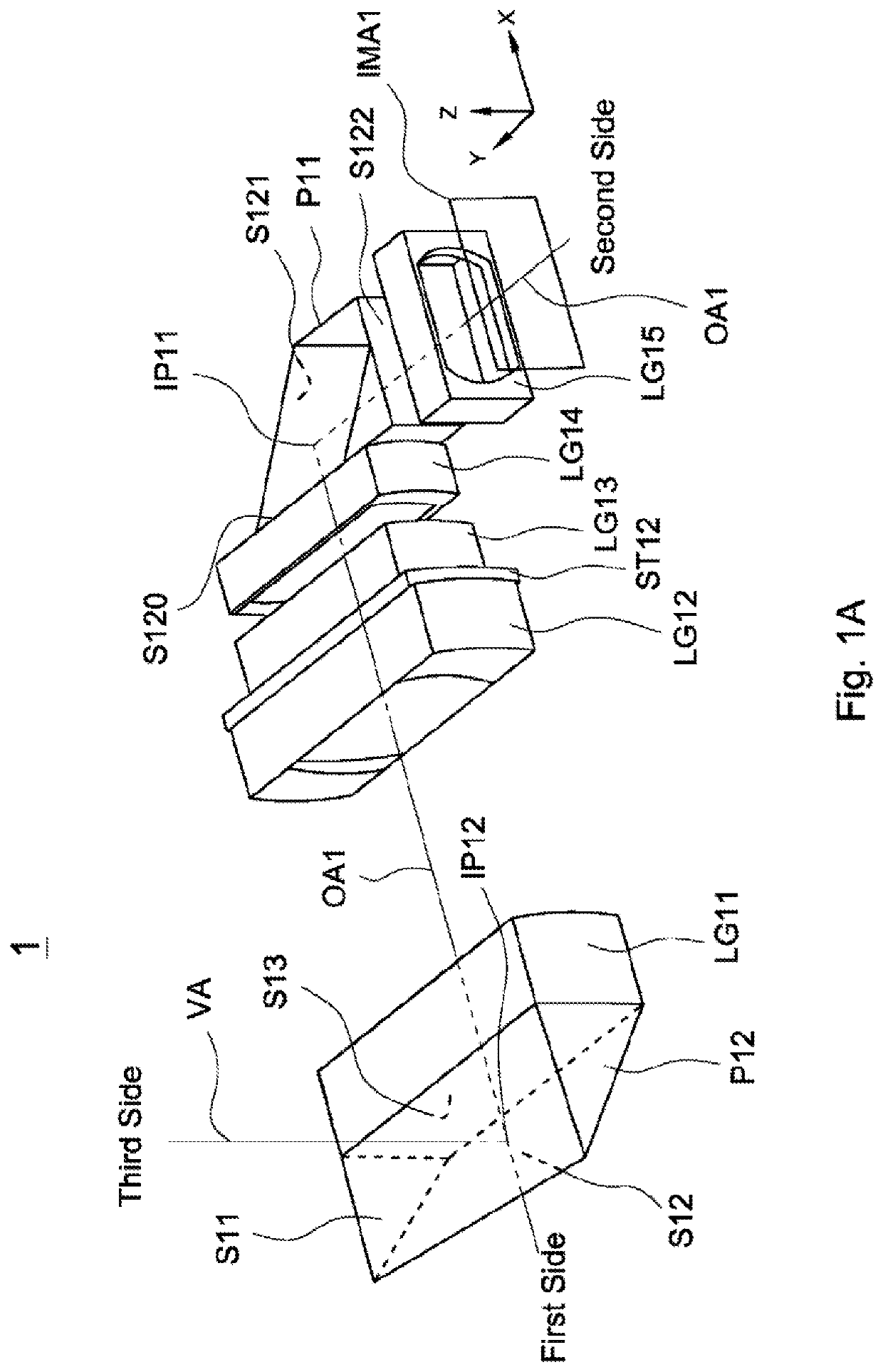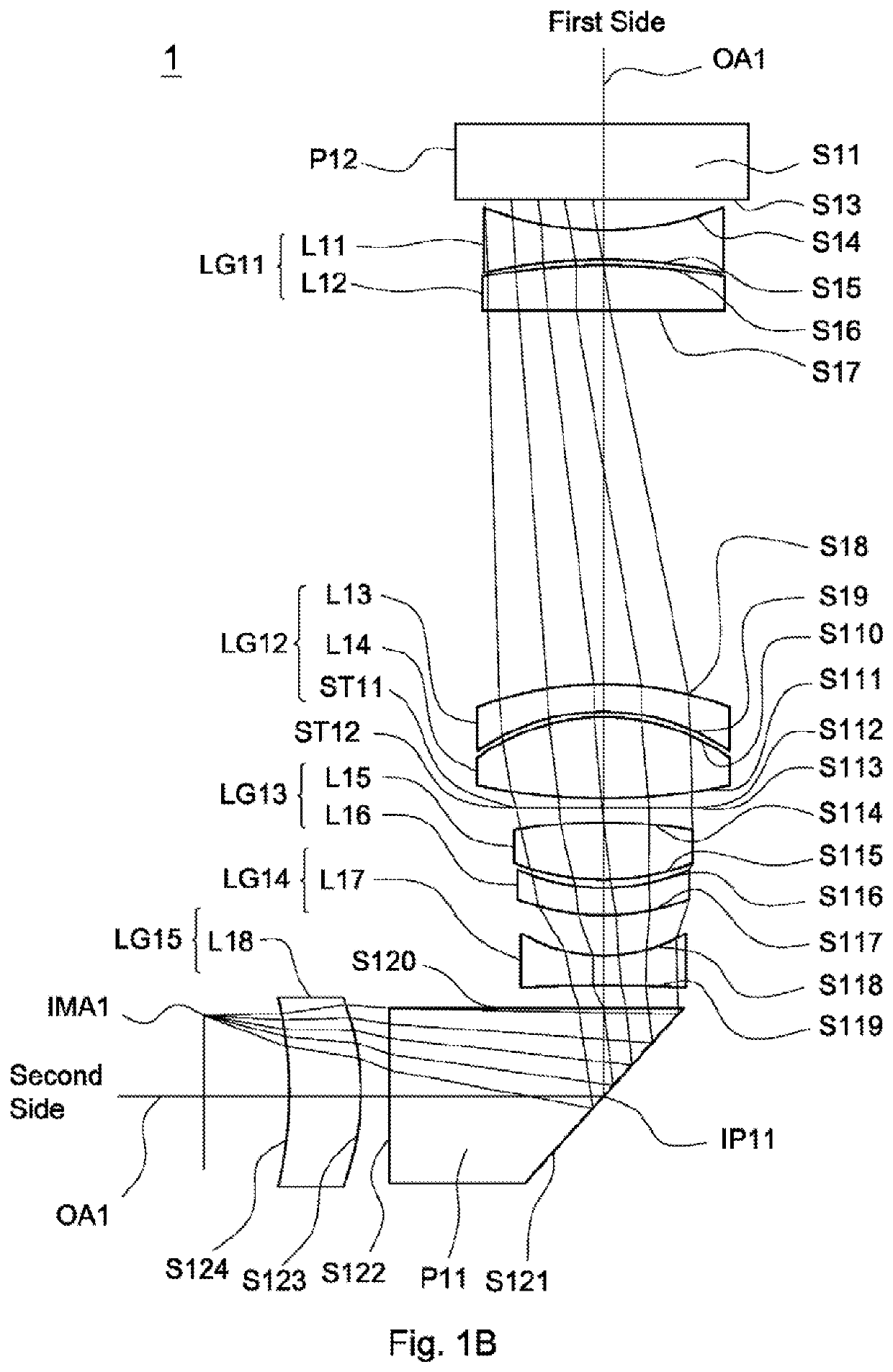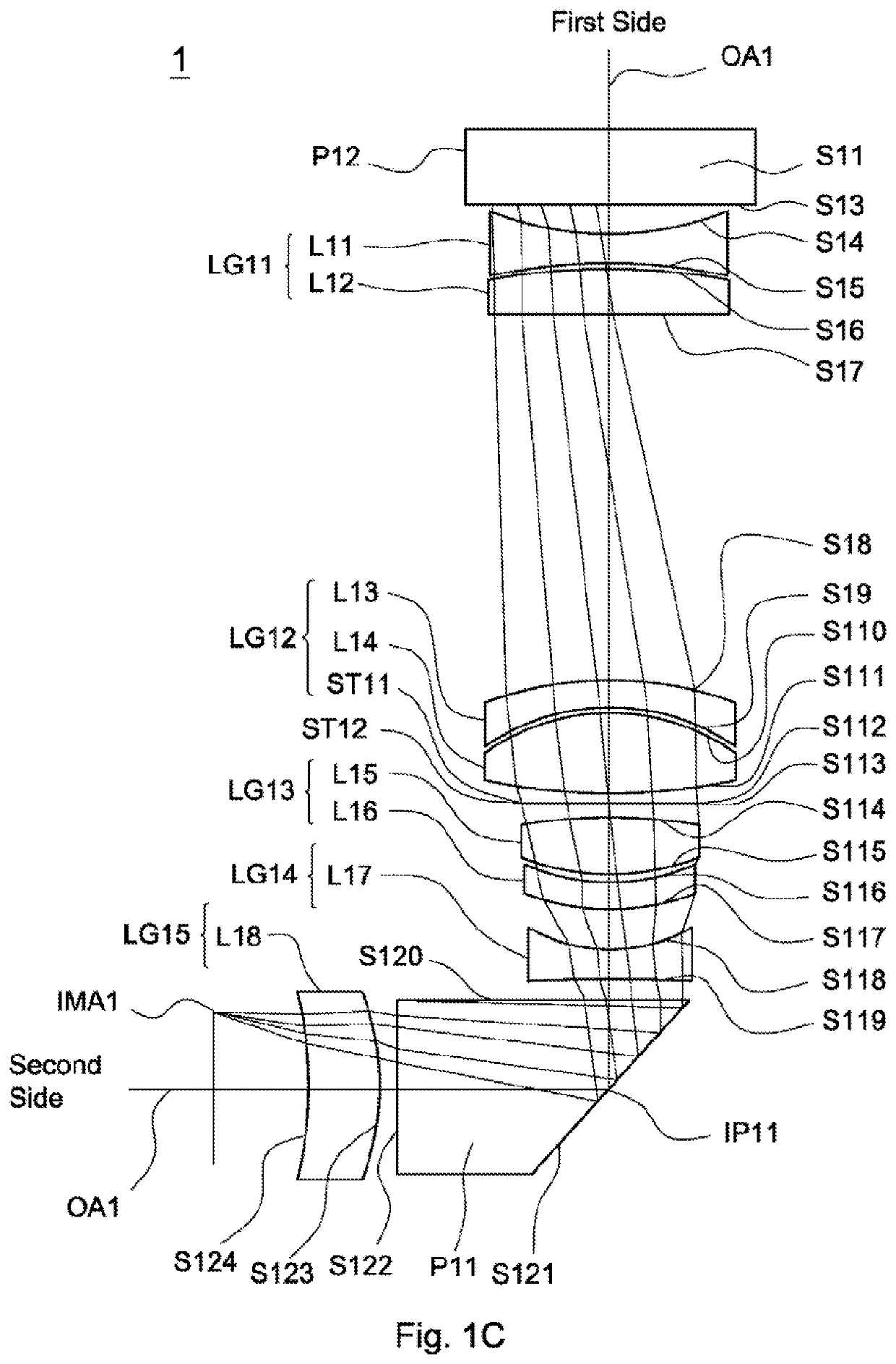Lens Assembly
a technology of lens and assembly, applied in the field of lenses, can solve the problems that smartphones cannot be equipped with traditional optical zoom lenses, thin and light smartphones, etc., and achieve the effects of reducing the total lens length, improving resolution, and good optical performan
- Summary
- Abstract
- Description
- Claims
- Application Information
AI Technical Summary
Benefits of technology
Problems solved by technology
Method used
Image
Examples
first embodiment
[0039]A detailed description of a lens assembly in accordance with the invention is as follows. Referring to FIG. 1A, FIG. 1B, FIG. 1D, and FIG. 1G. The lens assembly 1 includes a second reflective element P12, a first lens group LG11, a second lens group LG12, a second stop ST12, a third lens group LG13, a fourth lens group LG14, a first reflective element P11, and a fifth lens group. LG15. The second reflective element P12 is a prism and includes a second incident surface S11, a second reflective surface S12, and a second exit surface S13. The second incident surface S11 faces the third side along the vertical axis VA. The second reflective surface S12 faces the second side along the axis OA1. The second exit surface S13 faces the second side along the axis OA1. The second incident surface S11 and the second exit surface S13 are perpendicular to each other. The second reflective element P12 can also be a reflective mirror. The second reflective element P12 can also only include on...
fourth embodiment
[0081]The fifth lens group LG55 can move to the second side or the point IP51 along the axis OA5 for auto focus. In operation, the light path of the tight from the third side (not shown) is the same as that of in the fourth embodiment, and will not be described here again.
[0082]In addition, the lens assembly 5 satisfies at least one of the conditions (1)-(11), wherein the definition of each parameter is the same as that of in the first embodiment, and will not be described here again. When any one of the above conditions (1)-(11) is satisfied, the refractive power of the lens assembly 5 can be effectively distributed to reduce the sensitivity of the lens assembly 5. With the above design of the lenses, stop ST51, reflective element P52, reflective element P51, beam splitter BS5, and at least any one of the conditions (1)-(11) satisfied, the lens assembly 5 can have an effectively decreased total lens length, an effective increased resolution, an effective corrected aberration, and t...
sixth embodiment
[0094]The definition of aspheric surface sag z of each aspheric lens in table 10 is the same as that of in Table 1, and is not described here again. In the sixth embodiment, the conic constant k and the aspheric coefficients A, B, C, D, E, F, G of each aspheric lens are shown in Table 11.
TABLE 11SurfaceNumberkABCDEFGS61 0.605534−8.2521E−06−4.2900E−06 1.1144E−07 1.6441E−08 1.9782E−11−4.1374E−11 8.8215E−13S62 −0.05297−9.8776E−06 3.9308E−07−1.1968E−08 5.7062E−09 1.5351E−10−5.6251E−12 3.4005E−13S63 0.069091−5.1377E−07−2.7525E−06−8.2468E−08−7.3903E−09−9.2040E−11 4.4839E−12 3.3640E−13S64 0.180518 2.0777E−06−3.2906E−06−2.7644E−07 4.1752E−10 1.3338E−10−4.2991E−12−1.8689E−13S69 −0.46605 2.3596E−05 2.0210E−06 2.7809E−07 1.8273E−08 1.0821E−09 4.9151E−11−2.2898E−11S610 −2.79878 7.3967E−06 2.0203E−06 7.9069E−08 1.2561E−08 1.2412E−09 2.8550E−11−1.5229E−11S611−49.0118−1.1863E−04−7.7431E−06−2.1814E−07−3.4040E−08−8.2242E−09 1.8031E−10 2.7308E−11S612 2.164263−1.0333...
PUM
 Login to View More
Login to View More Abstract
Description
Claims
Application Information
 Login to View More
Login to View More - R&D
- Intellectual Property
- Life Sciences
- Materials
- Tech Scout
- Unparalleled Data Quality
- Higher Quality Content
- 60% Fewer Hallucinations
Browse by: Latest US Patents, China's latest patents, Technical Efficacy Thesaurus, Application Domain, Technology Topic, Popular Technical Reports.
© 2025 PatSnap. All rights reserved.Legal|Privacy policy|Modern Slavery Act Transparency Statement|Sitemap|About US| Contact US: help@patsnap.com



